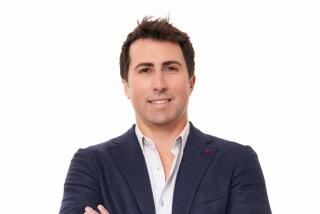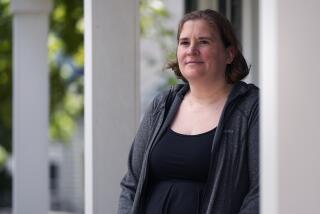States Move to Fight Soaring ATM Charges
- Share via
A year after the nation’s biggest automated teller networks lifted bans against charging one another’s customers for using an ATM, the percentage of ATMs that charge the fees has skyrocketed, the surcharges have soared and legislatures across the country have roared into action.
Already Iowa and Connecticut have banned these fees outright, while legislatures in 12 other states, including California, are considering bills to either ban or restrict charging another bank’s customers to use an automated teller.
In addition, national legislation has been introduced to increase fee disclosures, while Sen. Alfonse M. D’Amato (R-N.Y.), chairman of the Senate Banking Committee, plans to reintroduce a bill calling for a nationwide ban on the secondary fees, which banks argue are necessary operating charges. D’Amato opened hearings on ATM fees Wednesday in Washington.
These fees struck a nerve partly because bank customers--including state and federal legislators--realized they were being charged twice--and rather exorbitantly--for a single transaction, says Ed Mierzwinski, program director for the U.S. Public Interest Research Group (PIRG) in Washington, D.C.
Previously, most banks charged their own customers “foreign” ATM fees when customers used another bank’s machinery. The bank whose ATM was used didn’t ding the consumer for a charge--it assessed the consumer’s bank through “interchange” fees of between 30 and 50 cents a pop.
But in April last year, operators of the nation’s largest automated teller networks, Mastercard’s Cirrus and Visa’s Plus, gave in to pressure from banks and lifted restrictions on how much one bank can charge another bank’s customer for an ATM transaction. Since then, the number of banks that assess charges on non-customers who use their ATMs has skyrocketed, Mierzwinski says.
Banks “have decided to soak consumers with multiple fees every time they need to take money out of their accounts,” D’Amato said at the hearing Wednesday. “The people who are getting hit the hardest are the ones who can least afford it.
“A $3 fee on a $200 withdrawal is a nuisance,” he said, “but taking a $3 bite out of a $20 withdrawal is an outrage.”
Currently 45% of the nation’s ATMs assess surcharges of 25 cents to $2.50 per transaction, according to a recently released survey by PIRG. Most banks that impose a surcharge on non-customers for ATM use--about 59%--charged $1 per transaction; about 31% charged $1.50. The average fee, which was 97 cents six months ago, is now $1.15, PIRG found. Again, these surcharges are in addition to the basic ATM charges assessed by the consumer’s own bank.
“You use the ATM once, you get charged twice,” Mierzwinski says.
The General Accounting Office on Wednesday released a study that found that the number of ATMs with surcharges increased from about 15,400 at the end of 1995 to 64,400 in February. The study of 246 banks nationwide also found the average charge tripled to 62 cents per transaction from 17 cents at year-end 1995.
But bankers say the charges are justified. ATMs are expensive to buy and operate--especially when they’re not attached to a bank branch. Those costs are easily justified when dealing with its own customers, who otherwise might be visiting a branch and doing a more costly human-to-teller transaction. But it doesn’t make sense for them to provide ATMs to other banks’ customers because the interchange fees don’t completely cover the host bank’s costs.
Furthermore, bankers contend that some consumers don’t mind the fees--they’re paying for convenience. To prove their point, the Consumer Bankers Assn. put together an extensive report that cited a host of studies that have been conducted in the last year to determine how consumers were responding to the fees.
One survey indicated that about 28% of American consumers had paid a surcharge in the last 60 days. The survey also found that about 60% of those surveyed had altered their ATM usage habits as a result of the fees.
Roughly one-quarter of all ATM users said they’d canceled a transaction when they realized that they were about to be charged a fee for it. (Banks are required to warn a consumer on the ATM screen that there is a fee for the transaction and to let the consumer opt out at that point.)
However, a small group of cardholders--3%--doesn’t appear to mind the fees, according to the banker’s group. They pay 20% of all “convenience fees” charged in the industry, using surcharging automated tellers an average of 10 times a month.
Assuming these fee-insensitive individuals are charged by their own banks as well, even a conservative estimate would indicate that they pay more than $200 annually in ATM usage fees alone.
One likely place to find a no-fee ATM: a state capitol.
In an apparent effort to avoid annoying legislators who are considering banning the fees, several banks have refrained from assessing surcharges at ATMs in state capitols, according to the PIRG survey.
The survey found, for example, that all but one of the 28 Wells Fargo ATMs checked for the survey charged non-customers $1.50 for a transaction. The exception: the Wells ATM in the California state Capitol, where a bill to ban ATM surcharges is pending. The bill, sponsored by Assemblyman Michael Sweeney (D-Hayward), would ban these fees in California. However, it has been tabled for 1997. It is expected to reach the Assembly floor for a vote some time in 1998.
In New Mexico, the research group checked eight machines owned by Sunwest Bank. Again, all but the one in the state Capitol assessed a surcharge.
Times wire services contributed to this story.
(BEGIN TEXT OF INFOBOX / INFOGRAPHIC)
Surging Surcharges
In April 1996, operators of the nation’s largest automated teller networks lifted restrictions on charging another bank’s customer for an ATM transaction. Since then, the number of banks that assess charges on non-customers who use their ATMs has skyrocketed.
A General Accounting Office study of 246 banks nationwide asked their charges as of Feb. 1, 1997 and Dec. 31, 1995. It found:
* The number of surcharging ATMs operated by banks and thrifts soared 318% between February 1997 and December 1995.
* The average charge tripled to 62 cents per transaction from 17 cents at year-end 1995.
*--*
1997 1995 Number of ATMs operated 119,000 89,000 by banks and thrifts: Number levying surcharges 64,400 15,400 on non-customers: Average surcharge: 62 cents 17 cents
*--*
****
How do the surcharges work out:
Surcharges by percent of banks surveyed*
No surcharge: 46%
1 cent to 99 cents: 3%
$1 surcharge: 33%
$1.01 and $1.99: 16%
$2 or more: 1%
Highest surcharge levied by survey participants: $3
* Does not add to 100% because of rounding
Source: General Accounting Office
More to Read
Sign up for Essential California
The most important California stories and recommendations in your inbox every morning.
You may occasionally receive promotional content from the Los Angeles Times.










